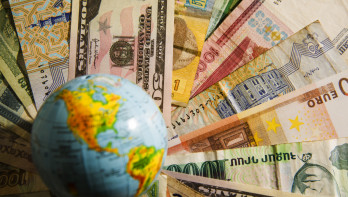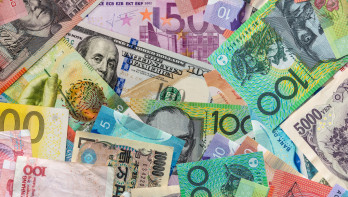Opinion Han de Jong
Two cats in a tight spot, hope for the best
We're getting a new government in the Netherlands from PVV, VVD, NSC, and BBB. From an economic perspective, I'm pleased that the main agreement emphasizes the importance of considering our earnings model. Literally, it states: "A healthy economy and flourishing businesses are necessary for prosperity in the Netherlands. Without a stable economy and a strong SME sector, there are no jobs and no money for public services. Entrepreneurs are needed to invest and are of great value to our society." This sets a very different tone from what we've heard from previous governments.
When the sustainability of public finances is at stake, the new team aims to focus more on limiting expenditures than on increasing burdens. That's also a significant change. Now, paper is patient, and we'll see how it all plays out. There are quite a few savings planned that are likely not easy to achieve. For example, €1 billion must be saved within the government itself, partly by reducing the number of civil servants after the explosive growth between 2018 and 2022. That won't be without challenges, I suspect.
Various tax increases for entrepreneurs are being reversed. That seems like a positive development to me. An additional tax bracket will be introduced in the income tax system to improve the income position of middle-income earners. I'm also pleased with the intention not to let the Netherlands lead the way with measures that make life more expensive and worsen the competitiveness of businesses. I'm also glad that the agreement states that energy costs for families and businesses should not significantly deviate from those in neighboring countries. How exactly we'll achieve that is not immediately clear to me. We'll see.
Our economy is shrinking again
Our economy contracted by 0.1% in the first quarter compared to the previous quarter. That was disappointing. Last year, our economy contracted for three consecutive quarters but showed recovery in the fourth quarter, although the growth figure for that quarter was revised downward this week from 0.4% to 0.3%. You hope that the recovery will continue, but that wasn't the case.
Source: Macrobond
The volume of consumer spending grew by 0.7% quarter-on-quarter, following growth of 2.0% in the fourth quarter of last year. That growth was due to the payment of the energy allowance. Therefore, I expected a decrease in consumption in the first quarter, but it wasn't as bad as expected. This is likely the effect of improved purchasing power.
I was pleasantly surprised by the increase in investments in fixed assets. They had dropped significantly in the second half of last year but improved somewhat in the first quarter of this year: +0.4%. Hopefully, this recovery will continue in the coming months.
The industry was the main culprit in the first quarter. The value added of production decreased by a whopping 3.8% quarter-on-quarter. That's significant. Usually, you only see this kind of decline in recessions. On the expenditure side, the decline in production is reflected in a decrease in the export of goods. Although the export of services grew, the volume of exports of goods and services together only fell by 0.1%. The CBS also publishes monthly figures on the volume of goods exports. I'm not happy with the figures for the first quarter. In the first quarter, the volume of goods exports was 5.6% lower than a year earlier. Compared to the fourth quarter, the volume was even more than 10% lower, with the caveat that these figures are not seasonally adjusted. The first quarter is always weak, but not as weak as this year.
Inventory depletion also made a strong negative contribution to growth. Drawing down on inventories reduced GDP growth by as much as 0.7%.
For the rest of the year, I am optimistic. Companies will not continue drawing down on inventories, and when that stops, it usually turns into an increase. Then the negative growth contribution typically turns into a positive one. That makes a difference. I also expect positive developments in industry and exports in the foreseeable future. The NEVI purchasing managers' index, which measures the confidence of industrial entrepreneurs, has been improving for a few months and reached a level above 50 in April. International indicators also suggest that world trade is picking up. It would be strange if we didn't benefit from that. Finally, I expect private consumption growth to accelerate further now that wage increases are clearly above inflation. Despite my optimism for the coming quarters, economic growth for the year as a whole will remain modest, just barely above the 0.1% of 2023. But that's mainly due to the lack of statistical carryover and weak exports.
Knot impresses more than Powell
This week, Fed Chair Jay Powell was a guest in the Netherlands. At the Tropenmuseum in Amsterdam, he participated in a panel discussion with DNB President Klaas Knot. I'm a fan of Powell, but honestly, I was more impressed by Knot's performance, although that may be because I follow Powell's remarks more closely than Knot's speeches. Powell didn't say anything I hadn't heard from him before.
Both gentlemen are confident that inflation will be fine. Powell made it clear that interest rates will be lowered, but not in the very short term. Knot, on the other hand, made it clear that the ECB will lower rates on June 6. He didn't want to commit to what the path will be after that, but influential ECB board member Isabel Schnabel said this week that the economic data currently available do not justify further rate cuts in July. So, the ECB will probably follow a rhythm of one rate cut every second meeting, meaning one rate cut per quarter.
I found Knot's analysis of the consequences of the differing responses to the pandemic interesting, which may have led to much higher productivity growth in the US than in Europe, as reflected in current statistics. When the pandemic broke out and large parts of the economy came to a standstill, masses of people in the US were laid off. Between February and April 2020, more than seventeen million Americans lost their jobs. The unemployment rate increased by over 10 percentage points. However, those people received money from the government. Unemployment benefits were increased and made more accessible. Additionally, all Americans received $1,200 from the government. European countries opted for a different strategy. We tried to protect jobs by having the government effectively pay part of the wage costs. In the Netherlands, for example, this was done through the NOW scheme. As a result, the increase in unemployment in our country was limited to just over 1 percentage point.
As Knot said in the Tropenmuseum, the American labor market was completely shaken up. The vast majority of those 17 million unemployed have since found jobs, and naturally, in the places where they are most productive. In economist jargon: there was a very significant reallocation of labor. In our case, however, the supply side of the economy was frozen, so there was no reallocation of labor to the most productive places. Overall, we are very satisfied with how measures such as the NOW scheme worked. But in the longer term, it may have been better for labor productivity if we had followed the American strategy.
US inflation not disappointing in April
US consumer prices rose by 0.3% in April compared to March and by 3.4% compared to April of last year. That was 3.5% in March. Excluding food and energy, core inflation also increased by 0.3% month-on-month and 3.6% year-on-year. In March, it was 3.8%.
Source: Macrobond
Financial markets breathed a sigh of relief. In the first three months of the year, inflation turned out to be higher than expected each time. Not this time. However, the chart shows that core inflation is still significantly higher than before the pandemic, and a monthly increase of 0.3% is still too high.
Alternative inflation measures illustrate the problem. Two are included in the following chart. 'Sticky price' inflation measures the price increase of items whose prices don't change very often. '16%-trimmed' inflation excludes the 8% fastest-rising and 8% slowest-rising goods and services from the calculation. The extremes can distort the average. These series are still well above pre-pandemic levels. Moreover, the pace of decline seems to have slowed down.
Source: Marcobond
Chinese figures provide a good picture of the challenges
Industrial production in China was 6.7% higher in April than a year ago. That's a decent figure, although not spectacular. The production is very likely benefiting from government stimulus measures.
However, China is facing significant problems. House prices in April were 3.1% lower than in April of the previous year, the lowest figure since 2015. Compared to March, prices were 0.6% lower. The decline in house prices is currently accelerating, which is a huge problem. There has been too much construction in recent decades. Many Chinese people have bought apartments as investments. However, there is enormous vacancy. Several developers have already collapsed. For the time being, no growth contribution can be expected from the construction sector, while that sector has been a growth engine in recent decades. The decline in house prices could put the financial position of many homeowners under pressure.
Retail sales in China were 2.3% higher in April than a year ago. That was disappointing. Even in the Netherlands, they are currently growing faster, even when correcting for the inflation difference.
China has been trying for years to switch to a growth strategy that relies less on exports and more on domestic spending, especially consumption. But this approach isn't working. On the contrary, if the industry produces more but consumers don't want to buy the increased production, only exports remain. However, China faces a strong headwind in export-led growth due to the rising protectionism.
This week, Putin is visiting his good friend Xi. A cornered cat makes strange leaps. What happens when you corner two cats and they meet each other?
In conclusion
There is a new wind blowing in The Hague. Naturally, there is a lot of criticism and consternation from the opposition to the new government. Among those who voted for the four coalition parties, there is hope. On the economic front, I'm pleased that the importance of our earnings model is emphasized. How much the new team can achieve of their plans remains to be seen. The development of the relationships between the coalition partners is also exciting. Our economy contracted slightly in the first quarter, but I think improvements are forthcoming.
The conversation with Powell and Knot at the Tropenmuseum this week was interesting. A great success for the organizer, the Foreign Bankers Association, and in particular their driving force, my fine former colleague Arlette Koedam. I found Powell solid, but he didn't say anything new. I found Knot's performance strong. He provided clear, understandable, and convincing analyses. Perhaps those were not new either, but he presented them with verve. US inflation in April was not disappointing. That was a relief for financial markets. Of course, I wish them well, but you can't really call the figures very good either.
The Chinese economy is under great pressure. House prices are falling, and consumers are taking it easy. This leaves export-led growth. A looming tsunami of protectionist measures will put a stop to that. Then China will focus more on Russia. That economy is also being hit by measures from Europe and the US, the sanctions. So, we're pushing two cats into a corner and into each other's arms. Let's hope for the best.

Han de Jong
© DCA Market Intelligence. Op deze marktinformatie berust auteursrecht. Het is niet toegestaan de inhoud te vermenigvuldigen, distribueren, verspreiden of tegen vergoeding beschikbaar te stellen aan derden, in welke vorm dan ook, zonder de uitdrukkelijke, schriftelijke, toestemming van DCA Market Intelligence.



